project
Kahve is a mobile application I created to learn how to use Adobe XD during my UX design education. The Adobe XD course advised me to make a shopping application, and I decided to make a coffee shopping application.
Duration: 2 months
Methods: Interview, preference tests, User stories, User personas, User flows, Sitemap, Usability test, wireframe, prototyping
Tools: Adobe XD, UsabilityHub
PROBLEM
In the current day and age, many people are avid coffee drinkers, whether by choice or necessity. Currently, if someone needs coffee, their only option is to get it from franchises or stores. Some would prefer to enjoy quality coffee from the comfort of their homes, where they could add their personal touch. People that want good quality coffee in the comfort of their homes don't have any easy and fast way to do it.
GOAL
After defining the problem, I created an application allowing users to get the coffee of their choice in the easiest, fastest, and most enjoyable way possible. To achieve that goal, I conducted interviews to understand our users better and what they want and preference tests to know which fascia would be more enjoyable.
RESEARCH
Interview: For this project, I interviewed three participants, with each interview being done in person. A total of three questions were asked of the participants. The questions were: "How often do you drink coffee?", "Do you prefer to make your own coffee or buy already-made coffee?", "What are your thoughts on using an application solely to buy coffee?"
Preference Test: For my preference test, I made two different versions of my Hi-fidelity prototype, with the main difference being the color, and had my participants choose the one they preferred. Three out of three participants preferred the version with the light color.
Takeaway: After conducting the interview and preference test, I had a better image of my users' needs and goals. Even though they mostly bought coffee already made by franchises, they wanted to be able to make their own because it would be more convenient and add their personal touches, all while having access to it easily.
USER PERSONA
The target audience is everyone that enjoys coffee, but most specifically anyone aged 26 to 41 years old, a professional with an active life. Candice is a professional with a vibrant and busy schedule that likes to spend time with her loved ones. She wants an easy and fast way to buy quality coffee to make herself in the comfort of her home and save money.
USER STORIES
1. As a busy person, I want to be able to buy coffee on the go so that I can have time to do other things.
2. As a coffee lover, I want to be able to access a large repertoire of coffee, so I can enjoy many kinds of coffee.
3. As a person with not a lot of time, I want an app where buying coffee is straightforward so that I have more time out of my day.
USER FLOW AND SITEMAP
A user flow was created to show users' paths to buy coffee on Kahve. A sitemap showing the core features of Kahve was made, and a card sorting from participants was used to know how they would want the application to be organized.
TEST
A mid-level prototype was made to test the basic functionality of Kahve. After that, I tested it with participants by giving them tasks and seeing if they could use it and had feedback from them. The tasks were: "Search for a product you might be interested in and pick it.", "You have found a product you are interested in, buy it."
Positive:
1. Users found the application straightforward and easy.
2. Users did not need guidance to use the application.
3. Users found the application organized.
Negative:
1. Users found that the prototype needed to show more features.
2. Users needed clarification on the word choice.
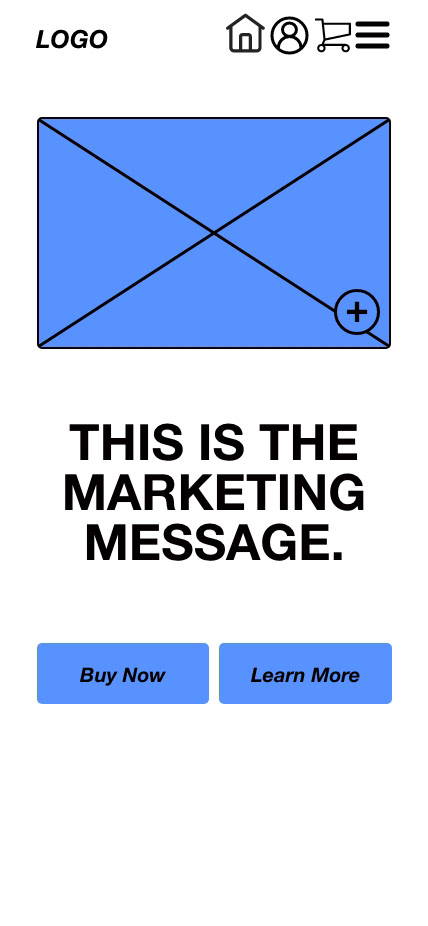
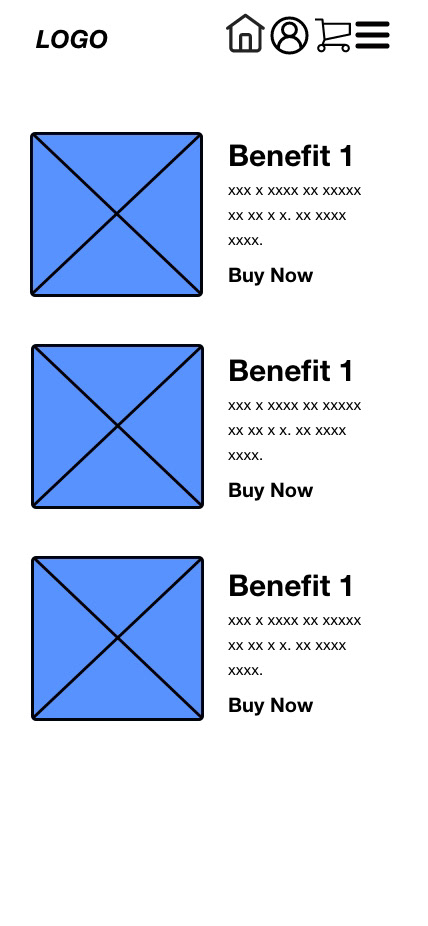
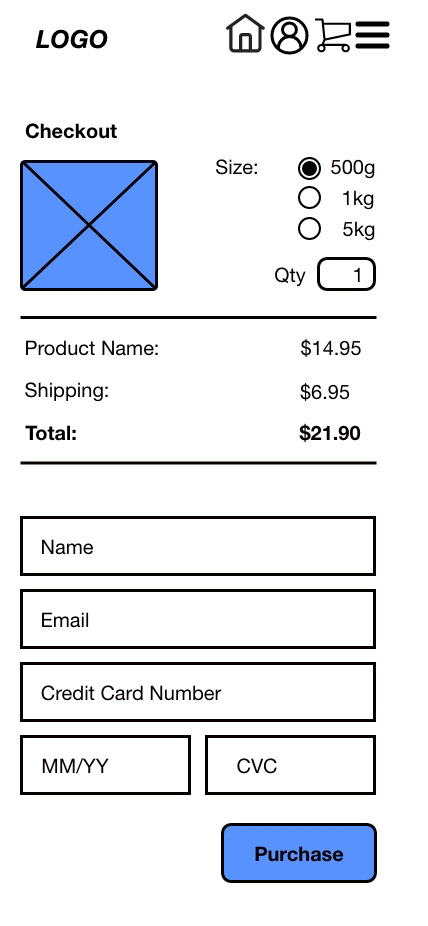
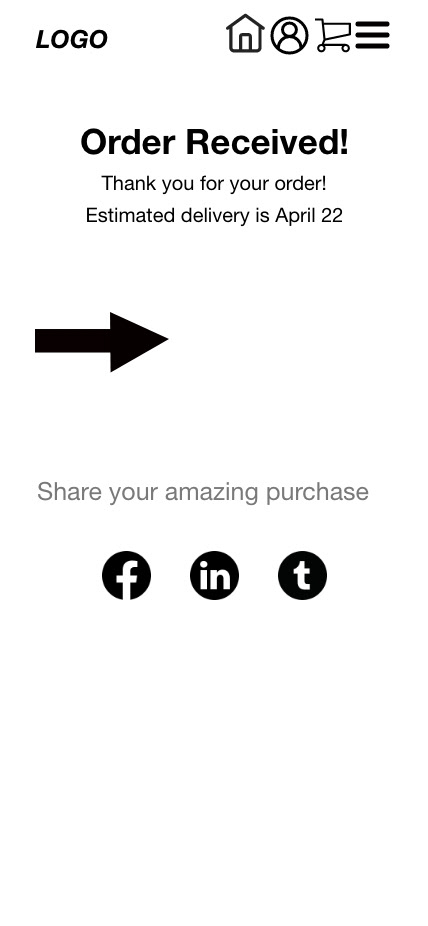
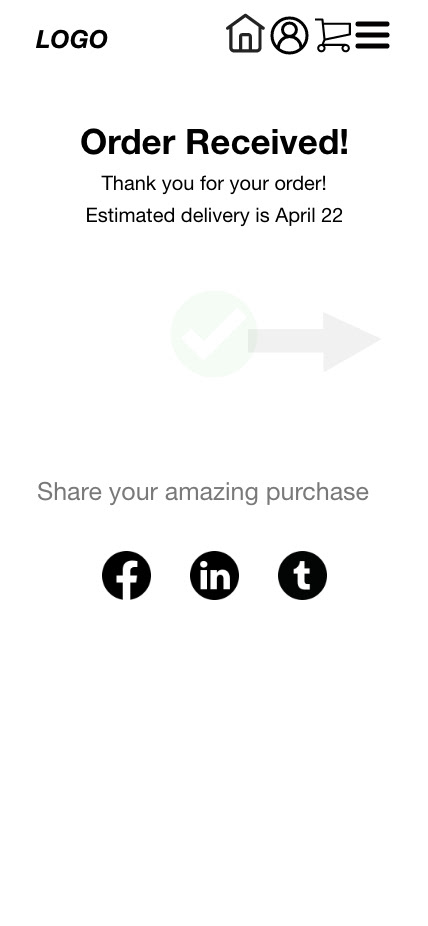
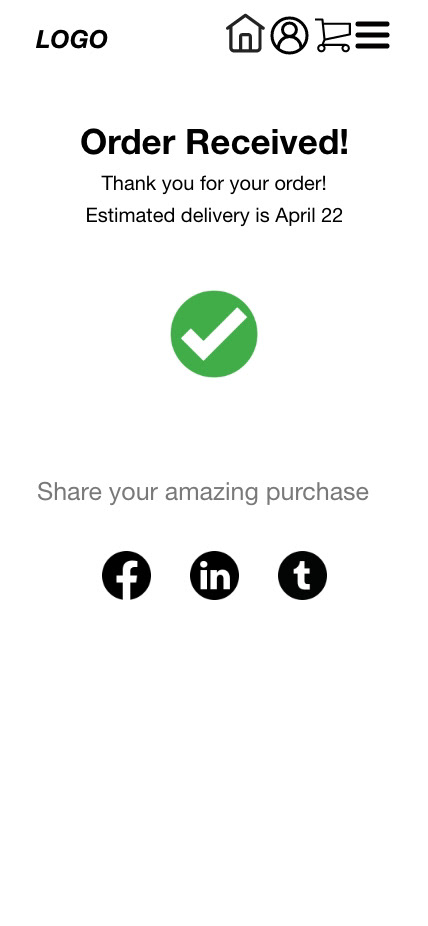
A High Fidelity was then created, taking the participants' feedback into account. More features were added, and as explained above, a preference test was conducted to decide the final appearance of Kahve. Some changes I made were the color scheme, the word choice, adding more features in the global navigation, and the addition of the shipment tracking map.
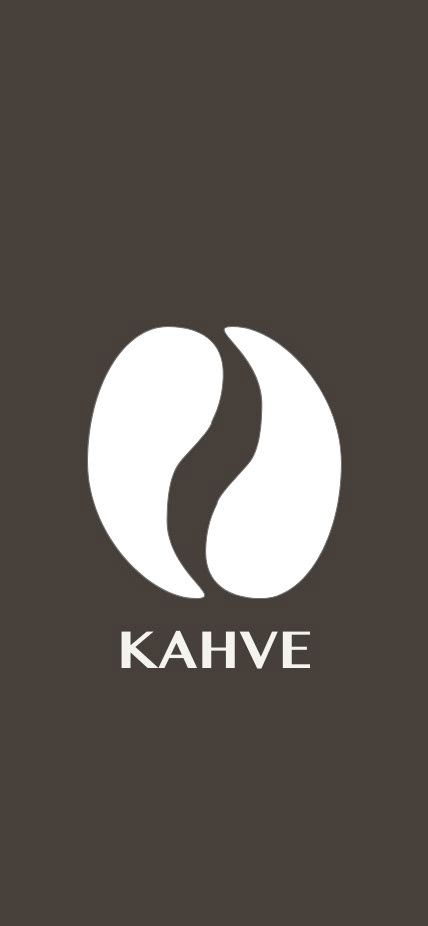

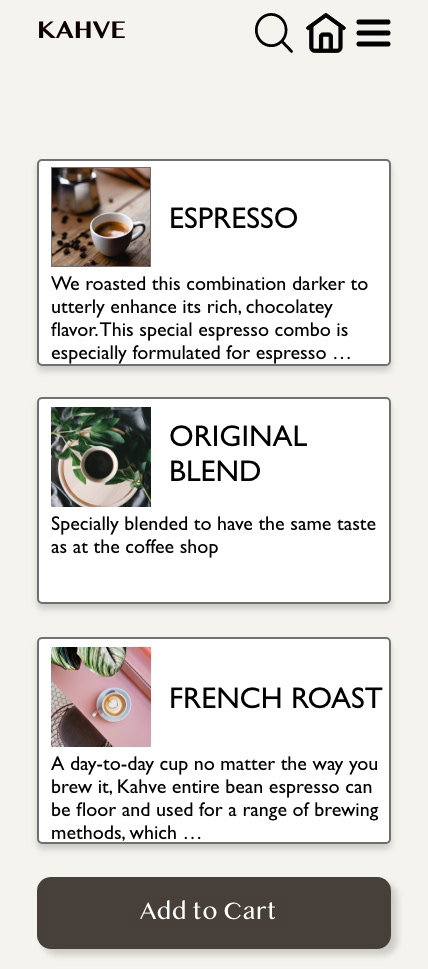
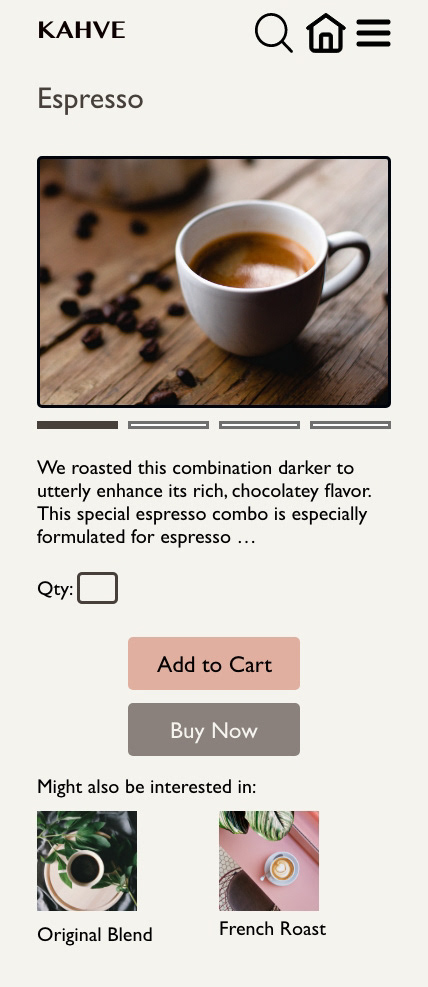
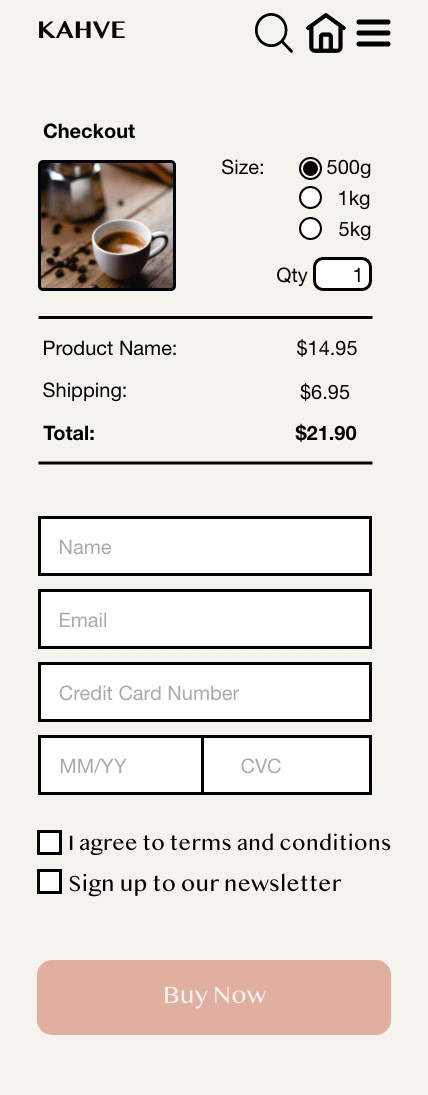
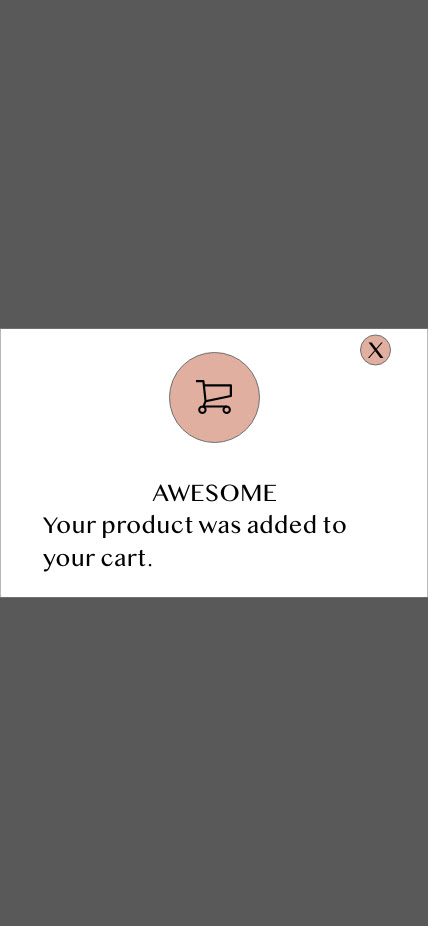
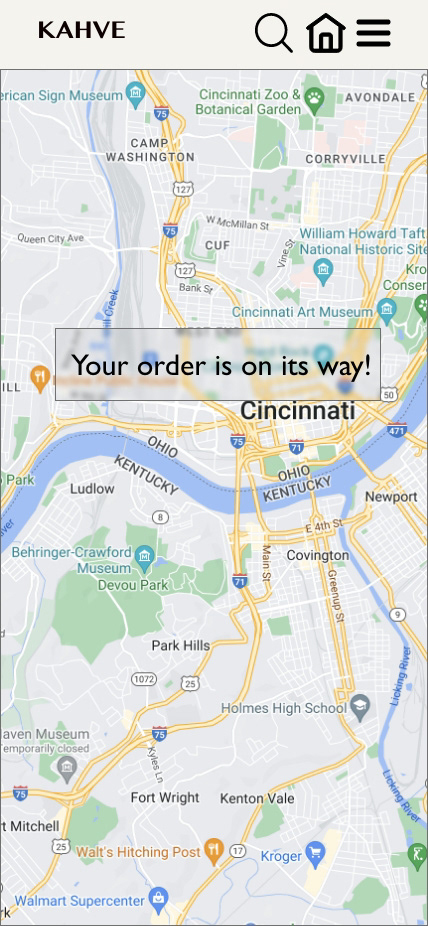

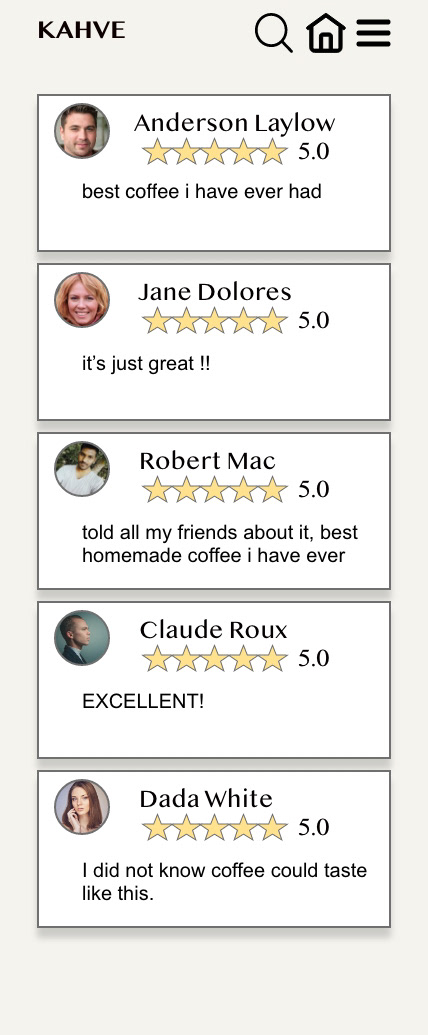
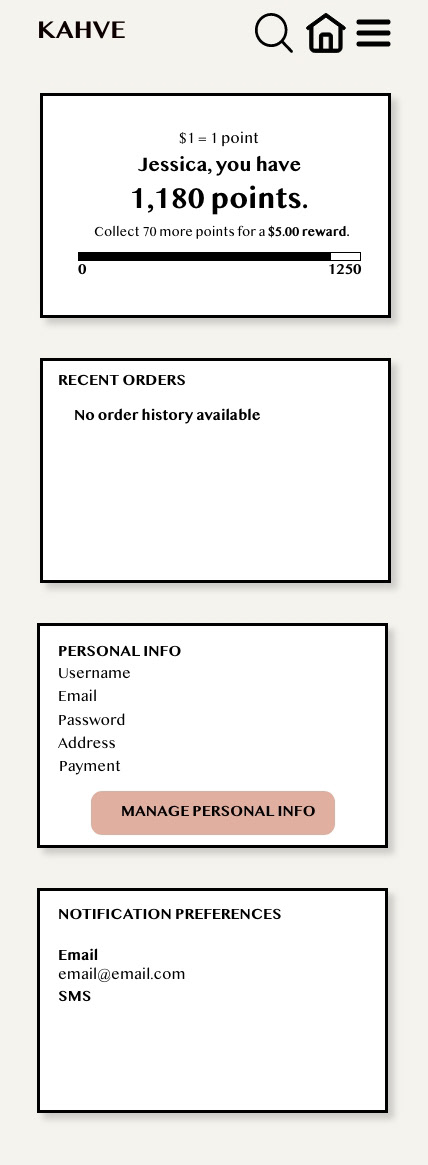
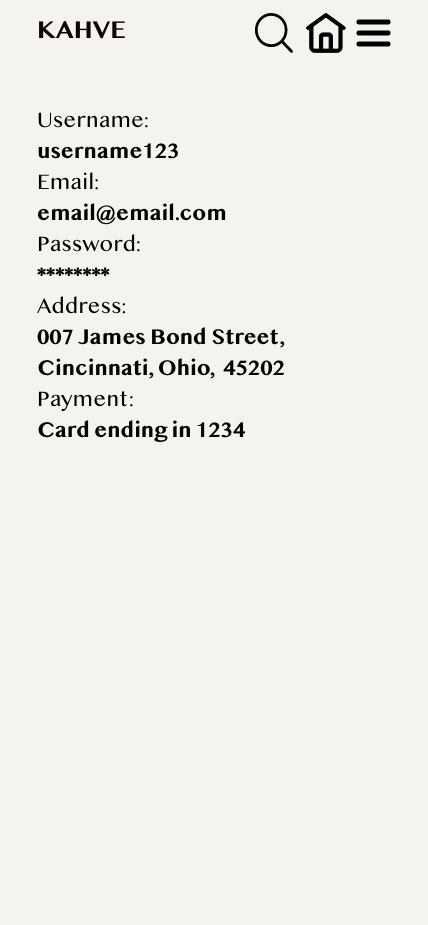
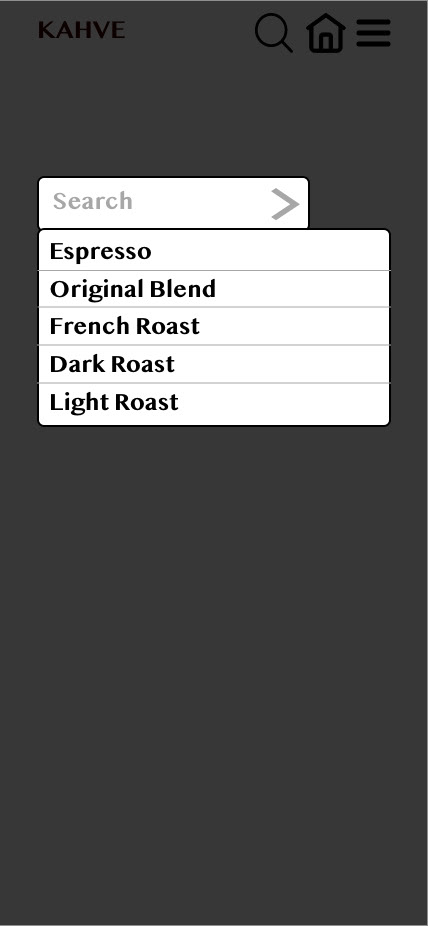
DESIGN
After polishing the application from feedback received from user testing, Kahve was updated with features, functionality, and colors.
CONCLUSION
Understanding what the users might want and need, and how they will use the application is always challenging. So, finding the users' needs was done through some research like interviews, creating a user persona, a user flow, and user testing to understand better what the users want.
After the research, the users' input was used to determine how the application would be designed for a better user experience.
In the future, I would like to have a larger pool of participants to conduct research with to collect more data.